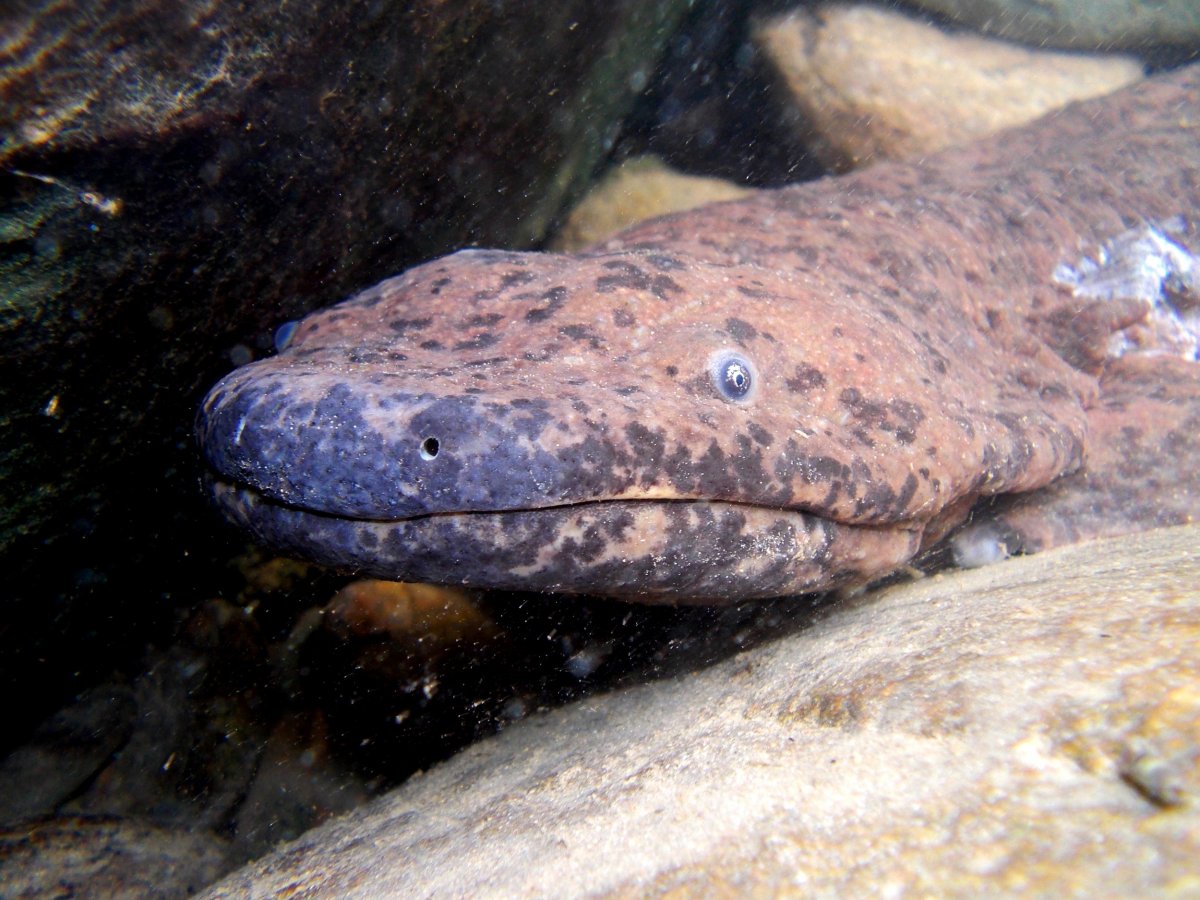The Chinese giant salamander (Andrias davidianus) is the world's largest amphibian, weighing in at more than 140 pounds and measuring up to 5.9 feet in length.
Despite playing an important role in Chinese culture for centuries (it is thought that the animals even inspired the famous Taoist yin and yang symbol) the salamander has now been all but driven to extinction in the wild, according to a landmark new study published in the journal Current Biology.
The animals are under threat from both habitat loss and human exploitation: They are now used in Chinese medicine and have also become a highly coveted delicacy in recent years. While the giant salamanders are routinely harvested by commercial breeding farms, demand for their parts is growing so fast that most end up being poached in the wild—despite this being forbidden under Chinese law—driving their decline.
Over the course of four years, researchers from global conservation charity ZSL (Zoological Society of London) and the Chinese Academy of Science's Kunming Institute of Zoology (KIZ) undertook possibly the most extensive wildlife survey in China to date to assess the precarious situation of the salamander, investigating 97 sites in 16 of the country's 23 provinces.
Their findings showed that populations of the animal, which were once widespread, are now significantly depleted or eradicated entirely.
"After four years of surveys, we only found giant salamanders at four sites, and, based on genetic analysis, it's likely that all of the animals we found were recent escapes or releases from salamander farms rather than truly wild individuals," Samuel Turvey, a co-author of the study from ZSL's Institute of Zoology, told Newsweek. "We were therefore unable to detect any definite wild giant salamanders in any of our survey localities in China, revealing that the species has undergone a catastrophic decline and is now on the very edge of extinction in the wild."
"Over the last couple of decades, giant salamanders have been "rebranded" as a luxury food item, and they are now farmed across China in a huge-scale, hugely lucrative farming industry that supplies salamander meat for restaurants," he said. "This has led to extreme pressure on wild populations, as wild animals are poached across their range to stock salamander farms."
The amphibians—which are currently listed as Critically Endangered by the International Union for Conservation of Nature—belong to an ancient group of salamanders that diverged from their closest relatives over 170 million years ago. They are considered a "living fossil" because, in that time, they have changed relatively little and thus, scientists consider them to be a global conservation priority.
Another related study, also published in Current Biology, found that Chinese giant salamanders aren't just one species, but five, and possibly as many as eight, some of which are now extremely rare and perhaps already extinct in the wild.
These findings may have significant implications for conservation efforts, especially because the country's Ministry of Agriculture supports widespread releases of farmed giant salamanders into the wild. While this measure is intended to boost numbers, releasing the animals in this manner without any regard for their genetic differences may be putting the salamander at even more risk, according to the researchers, because it risks mixing genetic lineages and spreading disease.

So what can be done to save the Chinese giant salamander before it's too late?
"Legislation protecting wild giant salamander populations already exists in China, and this needs to be enforced and strengthened to reduce poaching," Turvey said. "However, realistically, such enforcement is unlikely to happen in time across the huge range of the Chinese giant salamander, especially since any surviving wild populations can no longer be detected easily by conservationists."
"The huge number of giant salamanders in farms across China could hopefully constitute an important conservation resource, to support conservation breeding for eventual restoration of wild populations," he added. "However, the current pattern of giant salamander farming has very different management goals and practices to conservation breeding—animals are bred in high densities for food, under conditions where disease outbreaks are likely, and genetically distinct salamander lineages from different river basins are mixed together and hybridised. Salamander breeding needs to be refocused towards well-managed conservation breeding, in order to maintain distinct genetic lineages."
This story has been updated to include additional comments from Samuel Turvey.
Uncommon Knowledge
Newsweek is committed to challenging conventional wisdom and finding connections in the search for common ground.
Newsweek is committed to challenging conventional wisdom and finding connections in the search for common ground.
About the writer
Aristos is a Newsweek science reporter with the London, U.K., bureau. He reports on science and health topics, including; animal, ... Read more
To read how Newsweek uses AI as a newsroom tool, Click here.








